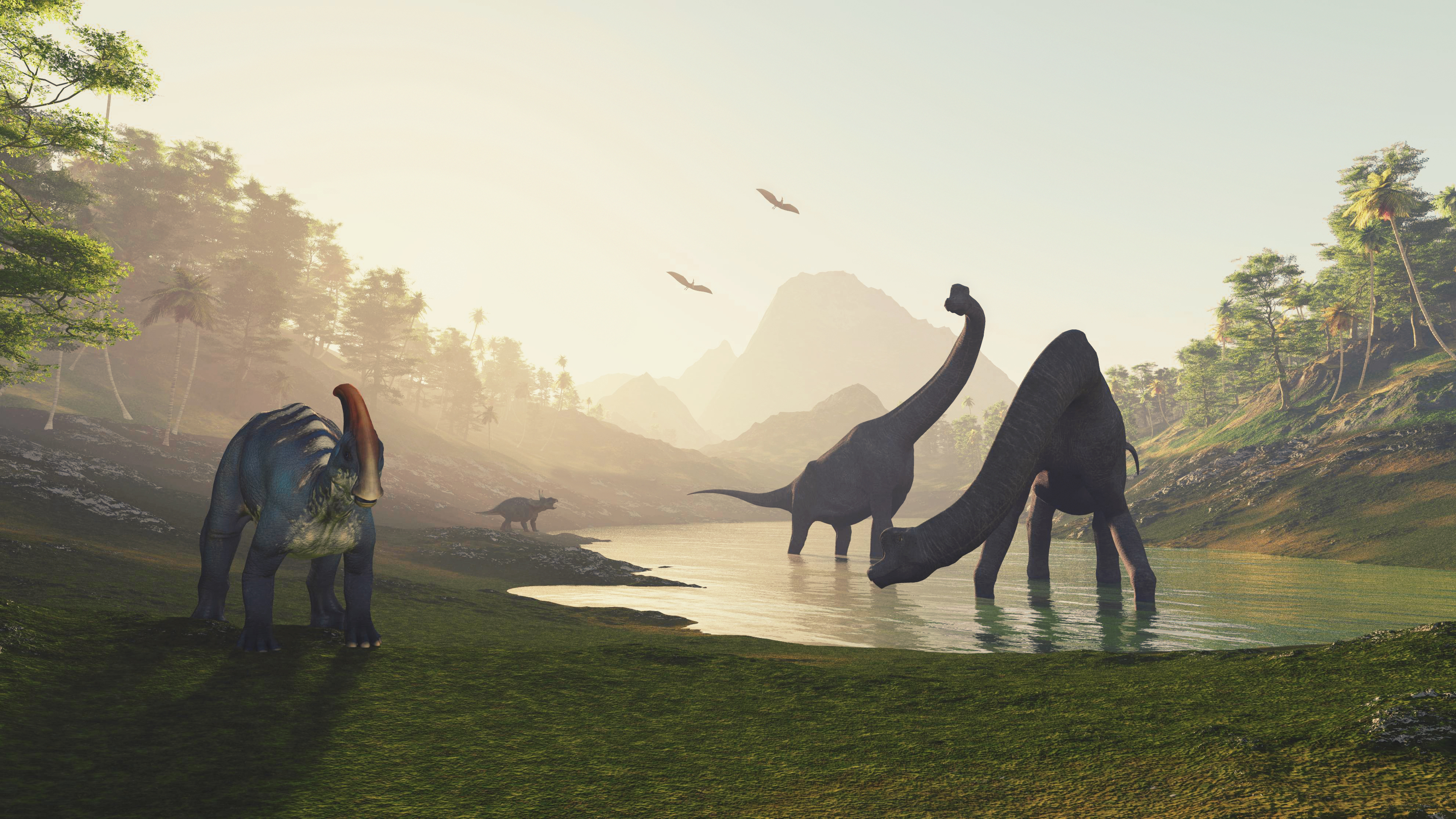Detecting alien life might be easier if we hunt for 'Jurassic worlds.' Here's why
"If they're out there, this analysis lets us figure out where they could be living."

Scientists usually search for life elsewhere in the universe by using Earth as a template — after all, it is the only planet we know where life thrives. (Life as we know it, at least.) But according to new research, a bygone era of Earth may be a better indicator of complex life than the Earth we know of today.
Telescopes that help assess whether exoplanets are habitable typically search for biosignatures in offworld atmospheres based on compounds, and compound levels, we see on Earth right now. However, scientists say these telescopes may be able to more easily detect those telltale signatures on worlds that don't look a lot like modern Earth. Instead, it may be a better bet to have our observatories look for worlds that resemble Earth as it was long ago, when dinosaurs ruled the surface. The reason for this is that, at that time, there were higher oxygen levels on our world. Simply put, it's easier to detect a lot of oxygen on an exoplanet than a little bit of oxygen.
"Modern Earth's light fingerprint has been our template for identifying potentially habitable planets, but there was a time when this fingerprint was even more pronounced — better at showing signs of life," study co-author Lisa Kaltenegger, who is the director of the Carl Sagan Institute, said in a statement. "This gives us hope that it might be just a little bit easier to find signs of life — even large, complex life — elsewhere in the cosmos."
Scientists generally agree the amount of oxygen in Earth's atmosphere has swung back and forth over the past 400 million years, going from 16 percent (just enough to spark a fire), to as high as 35 percent (beyond which that fire could never be extinguished.) Then, about 50 million years ago, oxygen levels stabilized to the 21 percent we see today.
Importantly, the new study's models show oxygen levels reached 30 percent about 300 million years ago, which would've been sufficient to enable growth of complex life forms. That includes the dinosaurs that ruled our planet roughly between 245 million and 66 million years ago.
So, telescopes could spot exoplanets in their own versions of the Phanerozoic era, scientists say. The atmospheres of such planets would be rich in oxygen, like Earth's was then, and would likely have two pairs of biosignatures — oxygen and methane and ozone and methane, which are easily identifiable by a telescope, the new study finds.
"The Phanerozoic is just the most recent 12% or so of Earth's history, but it encompasses nearly all of the time in which life was more complex than microbes and sponges," Rebecca Payne , the study's lead author and a scientist at Cornell University, said in the statement. "These light fingerprints are what you'd search for elsewhere, if you were looking for something more advanced than a single-celled organism."
Get the Space.com Newsletter
Breaking space news, the latest updates on rocket launches, skywatching events and more!
Scientists are also excited by the hypothesis that an exoplanet that has an atmosphere with 30 percent oxygen may indicate it hosts life beyond just microbes, perhaps "creatures as large and varied as the megalosauruses or microraptors that once roamed Earth."
"Hopefully we'll find some planets that happen to have more oxygen than Earth right now, because that will make the search for life just a little bit easier," said Kaltenegger. "And, who knows, maybe there are other dinosaurs waiting to be found."
This research is described in a paper published in October in the journal Monthly Notices of the Royal Astronomical Society.
exoplanet, search for life, extraterrestrial life, Cornell University, light fingerprint, modern Earth, dinosaurs, oxygen, biosignatures, methane, Phanerozoic era
Join our Space Forums to keep talking space on the latest missions, night sky and more! And if you have a news tip, correction or comment, let us know at: community@space.com.

Sharmila Kuthunur is a Seattle-based science journalist focusing on astronomy and space exploration. Her work has also appeared in Scientific American, Astronomy and Live Science, among other publications. She has earned a master's degree in journalism from Northeastern University in Boston. Follow her on BlueSky @skuthunur.bsky.social









